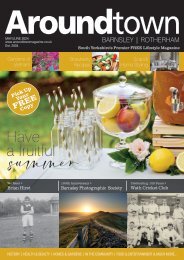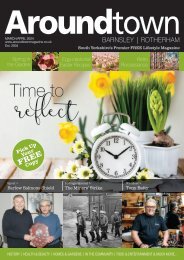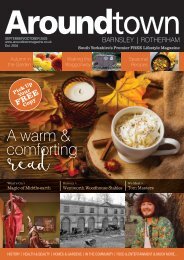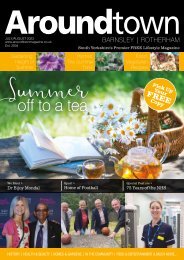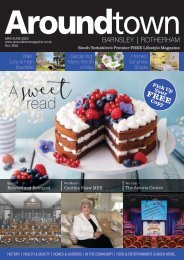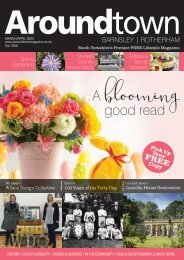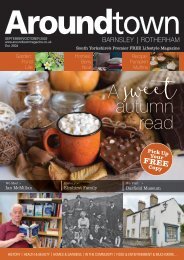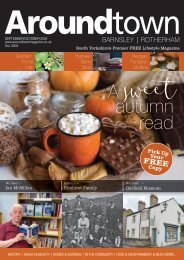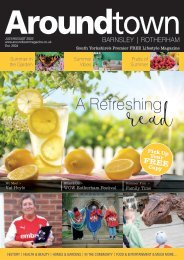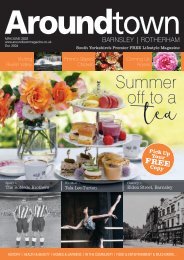Create successful ePaper yourself
Turn your PDF publications into a flip-book with our unique Google optimized e-Paper software.
GARDENING<br />
Make<br />
nature<br />
room<br />
for<br />
with wildlife<br />
gardening<br />
Britain is one of<br />
the most nature<br />
depleted nations in<br />
the world, with loss or<br />
degradation of natural<br />
habitats causing the<br />
tapestry of biodiversity<br />
to become threadbare.<br />
An urbanised Britain is leading<br />
to a wildlife crisis. Over 40 percent<br />
of the 8,000 species in the UK are<br />
in decline, with one in ten at risk<br />
of extinction.<br />
But how can we help<br />
nature recover?<br />
Rotherham Climate Action has<br />
recently partnered with Sheffield<br />
and Rotherham Wildlife Trust and<br />
Environment Action to form Nature<br />
Recovery Rotherham to stand up<br />
for nature and raise awareness of<br />
this pressing cause. On Wednesday<br />
23rd <strong>March</strong>, they will be declaring<br />
a nature emergency to encourage<br />
communities and the council to do<br />
even more to help.<br />
But there are lots of simple ways<br />
you can get involved to preserve the<br />
beauty and importance of nature to<br />
our entire ecosystem.<br />
Wildlife gardening is a really great<br />
way to get into connecting closely<br />
with nature right on your doorstep<br />
while reducing your environmental<br />
impact.<br />
It doesn’t matter if you have a<br />
windowsill, small garden, or large<br />
piece of land, there are many ways<br />
to make habitats for animals, plants<br />
and insects.<br />
Grow a wildpatch<br />
Long grass, peppered with<br />
flowers, is one of the rarest<br />
habitats in our well-tended<br />
gardens, yet it is incredibly<br />
beneficial for wildlife.<br />
Bring a touch of wild to your<br />
garden by planting wildflowers that<br />
provide vital resources to support<br />
a wide range of insects, create<br />
feeding opportunities for birds,<br />
and shelter small mammals that<br />
couldn’t survive in urban areas.<br />
Set aside some lawn, leaving<br />
it to grow, and wait to see what<br />
arrives. The less pristine the lawn,<br />
the more promising it is for wildlife.<br />
Create a container garden<br />
Pots and containers are a<br />
great way of introducing<br />
wildlife features into more<br />
formal areas of the garden<br />
like the patio, or outside the<br />
front door.<br />
Get creative with your<br />
containers. Try an old watering<br />
can, chimney pot, kettle or teapot,<br />
holey boots, metal pails and<br />
buckets, paint tins, pans and<br />
colanders - the sky’s the limit.<br />
Whether you choose to plant<br />
herbs, meadow flowers, or<br />
hanging basket flowers, a variety<br />
of plants will attract different<br />
species. But always remember<br />
to use peat-free compost in any<br />
pots you plant up. Peatlands are<br />
withering away to nothing, taking<br />
with them a valuable ecosystem,<br />
flood risk mitigator and<br />
carbon store.<br />
70 aroundtownmagazine.co.uk



